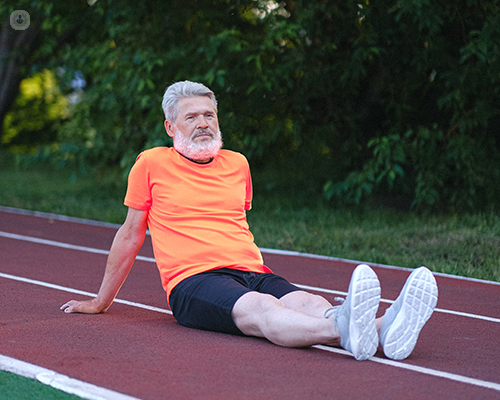Breathlessness – How to breathe correctly (Part 3)
Escrito por:Breathlessness, or dyspnoea, refers to the sensation of having difficulty breathing or feeling short of breath. While feeling breathless from time to time is a natural human response, breathlessness that occurs at rest or while carrying out daily tasks, such as reaching down to a low cupboard, requires expert assessment and treatment.
Following on from the second of this three-part series of articles on breathlessness, highly renowned consultant cardiologist Dr Jonathan Pitts Crick offers a comprehensive insight into the main breathing techniques that you should try if you are feeling breathlessness, in this conclusion of the series.

What are some breathing techniques that patients should try if they feel breathlessness?
You should not try breathing techniques before confirming that there is not a serious cause for your breathlessness. This may not be something that you can identify yourself, so your first port of call should be to see a specialist for your breathlessness.
Having done that, and if breathlessness is still a problem, there are four main breathing techniques that you can try:
1. Regulate your breathing
It is normal to feel mildly breathless while walking uphill or doing a similar kind of activity. People naturally think that if they are more breathless than normal this is because you need more oxygen, but in fact - unless you have severe lung disease - the oxygen level in your blood is perfectly adequate (over 90 per cent saturated) while exercising even if you feel the need to breath more. Unfortunately, breathing more stimulates the nerves in your chest to make you more breathless, so it’s a “vicious circle”. This can be avoided by controlling the amount that you breathe, based on the speed of your walk.
If you regulate your breathing by counting your steps, breathing in gradually over four steps, and then slowly breathing out on the next four steps, then this will provide you with plenty of oxygen for walking at a normal speed on the level or downhill.
If, on the other hand, you are walking up a steep hill, then you can breathe in over three steps and breathe out over the next three steps, which is enough for any type of hill – and the faster you walk, the faster you breathe, so you can walk quite briskly. This will prevent you from getting short of oxygen and from getting held back by your breathing.
2. Practise anaerobic exercise
Running upstairs is mainly anaerobic exercise, because you are not producing the energy you need to do the running. Instead, the energy you need is already available and stored in your muscles and can be released without using oxygen. So, you can just take a deep breath and run up the stairs if you want to.
I usually recommend my patients to take one breath at the top of each flight of stairs, so that you run up one flight of stairs, breathe out, breathe in again, then go up the next flight of stairs and breathe out and breathe in again, then the next flight of stairs, etc.
Generally, my patients can run up four or five flights of stairs like that, including those who said they were unable to go up even one flight of stairs without stopping.
3. Avoid overbreathing after exercise
If you have done a strenuous activity and you are feeling breathless, you need to avoid overbreathing. This is because the breathlessness you feel from having done high-impact exercise is due to lactic acid. The liver will soon break down this lactic acid, regardless of whether you breathe in or not. Thus, you do not need to breathe more to get rid of the breathlessness (it actually makes it worse) - you only need to wait.
However, this action naturally makes you want to breathe more, so if you can control this impulse by spending three quarters of your time with emptied lungs (which avoids stimulating the nerves in your chest), then that will solve the problem. You can breathe in and breathe out straight away after, then stop and count to five, and then breathe in and breathe out straight away and count to five, etc. After you have done that four or five times, the breathless feeling will usually melt away.
4. Don’t hold your breath while struggling
Some people get breathless after they have been in an awkward position – for example, when trying to get something out of a low cupboard or fixing something on the floor.
Often, the reason for their breathlessness is that they hold their breath as they bend down to do something, which means putting up the pressure in their chest while they are bending in the middle to help get into that awkward position. This pressure, in addition to not breathing, stimulates the respiratory centre. If you can just make sure that you continue to breathe and not hold your breath while carrying out your task, it will help you to feel much less breathless afterwards.
Dr Jonathan Pitts Crick is a highly acclaimed consultant cardiologist with over 40 years’ experience.
If you are worried about breathlessness and wish to seek expert assessment and treatment for it, do not hesitate to book a consultation with Dr Pitts Crick via his Top Doctors profile today.


